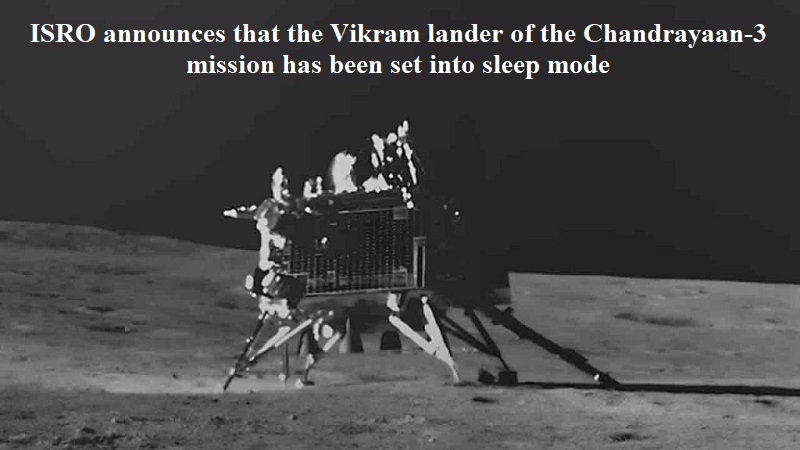
The Indian Space Research Organisation (ISRO) has reported that the Vikram lander of the Chandrayaan-3 mission has been placed in sleep mode. This significant event occurred at approximately 8 am IST on Monday (September 4). The Vikram lander surpassed its mission objectives by making a second soft landing on the moon’s surface, part of a “hop experiment.”
In a social media post, ISRO shared images of the Vikram lander before and after the hop, stating, “Chandrayaan-3 Mission: Vikram Lander is set into sleep mode around 08:00 Hrs. IST today. Prior to that, in-situ experiments by ChaSTE, RAMBHA-LP, and ILSA payloads are performed at the new location.”
“The data collected is received at the Earth. Payloads are now switched off. Lander receivers are kept ON. Vikram will fall asleep next to Pragyan once the solar power is depleted and the battery is drained. Hoping for their awakening, around September 22, 2023.”
“In-situ” refers to experiments conducted directly where the phenomenon occurs, offering insights into the lunar environment without removing samples to a different location.
The Vikram Lander, named after Dr. Vikram A Sarabhai, the father of the Indian Space Programme, was designed to operate for one lunar day, approximately 14 Earth days.
The collected data has been successfully transmitted back to Earth, contributing significantly to the primary mission goal of locating lunar water.
Following these operations, the lander’s payloads have been deactivated, while the lander receivers remain operational. The Pragyan Rover, accompanying the Vikram Lander, has also entered sleep mode. Both will remain in this state until they can recharge their onboard batteries using solar power, expected around September 22 after the lunar sunrise over the South Pole.
The success of the Chandrayaan-3 mission further establishes India’s position in space exploration, marking it as the first nation to land a spacecraft on the unexplored South Pole of the moon and the fourth nation to land on Earth’s lunar satellite, following the United States, China, and Russia.

Post Your Comments